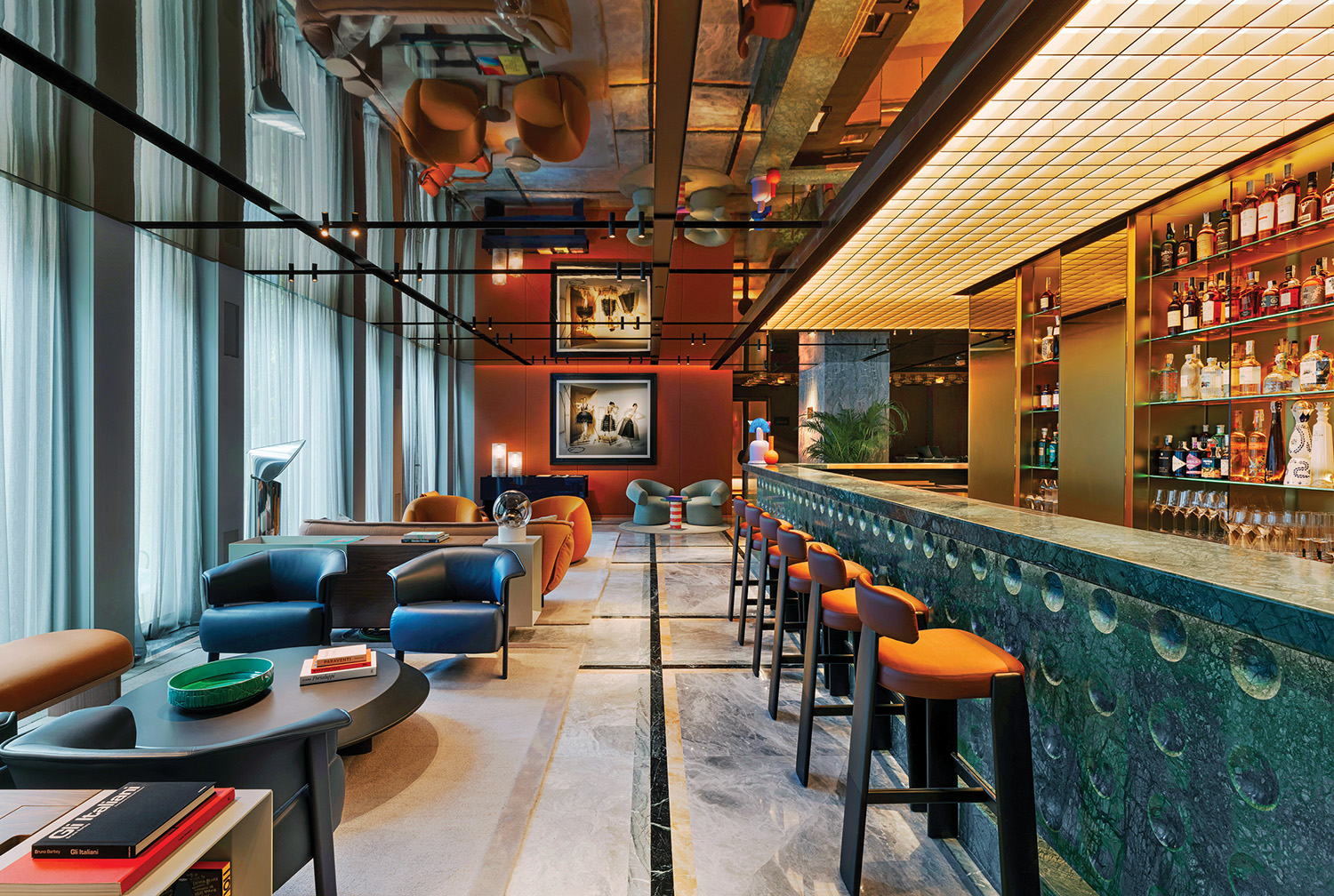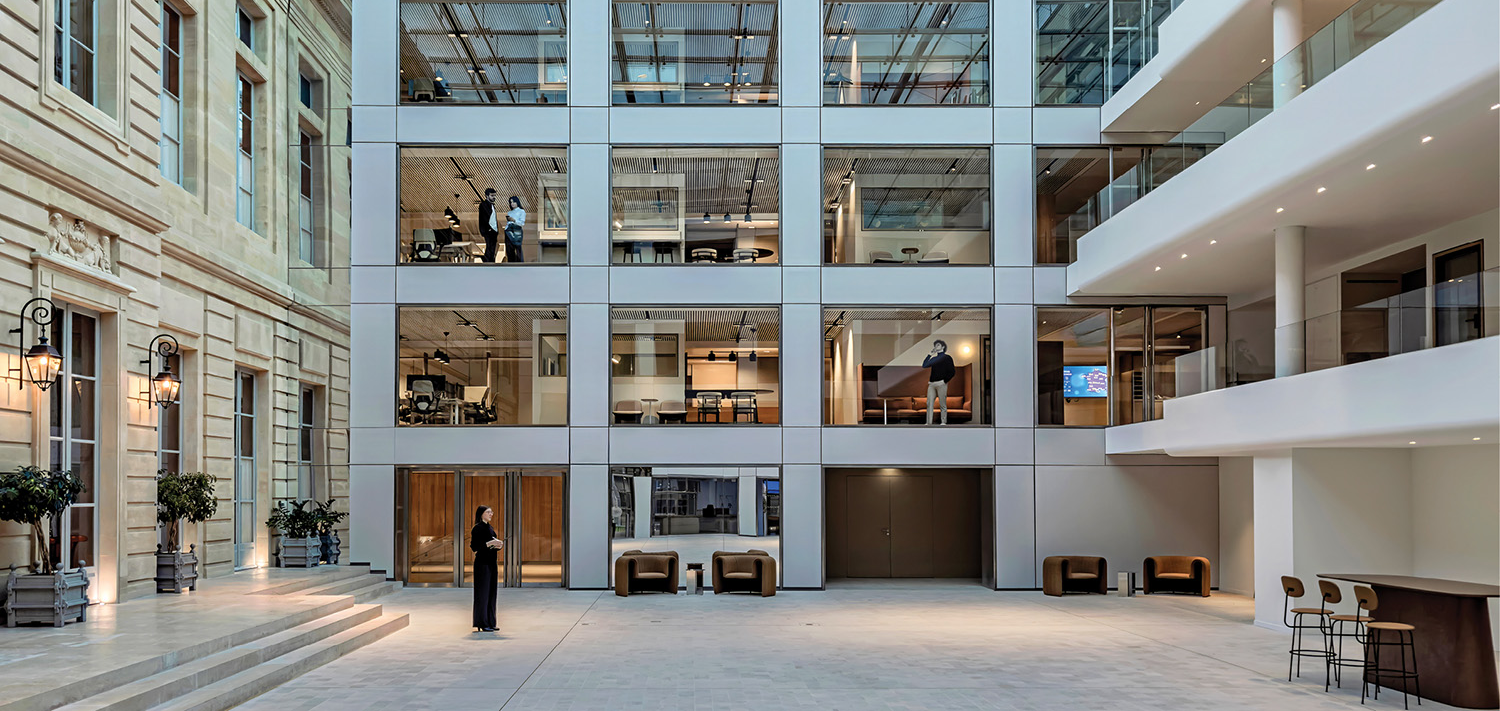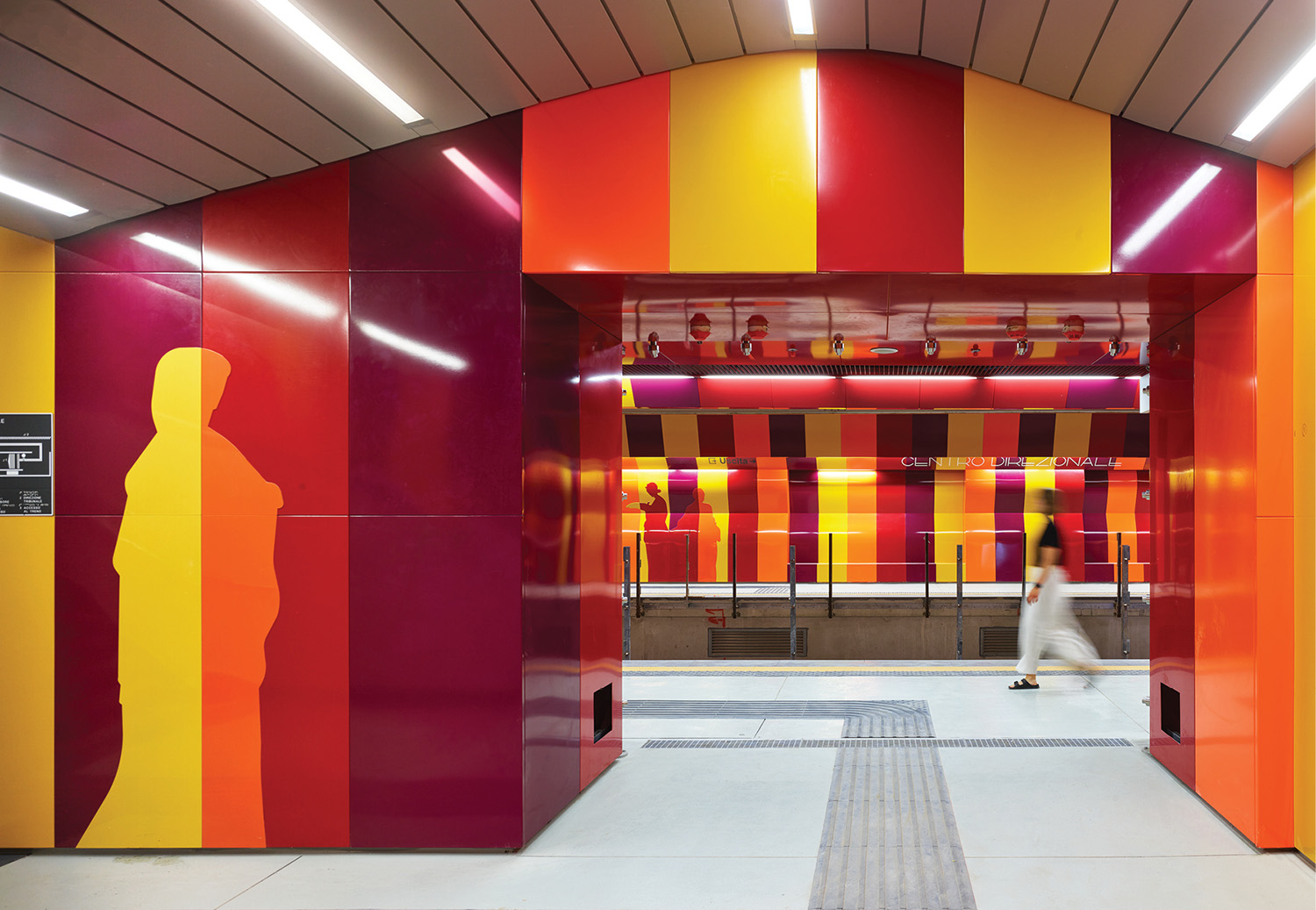Winning the Lottery: A Striking Affordable-Housing Project by Patrick Tighe
Ligne Roset has a high-style Southern California showroom by Tighe Architecture. Yet Patrick Tighe creates equally striking projects when not a touch of glamour is called for. That sensitivity came to the fore at his Sierra Bonita Apartments, a mixed-use affordable-housing project.
The commission from the City of West Hollywood was twofold: designing the building and simultaneously creating a municipal Green Building Ordinance as an alternative to LEED. “It has less restrictive criteria, and certification is less expensive, with no levels. A project just qualifies, or it doesn’t,” he explains. Serving as the program’s pilot, Sierra Bonita indeed qualified.
The steel-framed concrete construction rises five stories for a total of 50,000 square feet not including two levels of tenant parking below-grade. Public parking shares the ground level with retail space, a common room for building events, and a laundry facility. Above, the 42 one-bedroom apartments manage to squeeze all the essentials, plus a walk-in closet, into a compact 620 square feet. Four units meet Americans With Disabilities Act standards; the remaining ones could be adapted to do so.
Driving by, one would hardly take the $20 million Sierra Bonita for affordable housing. Tighe made certain it had street presence, he explains, by “playing with the fenestration.” The front facade’s expanses of glass are rare in affordable housing. Some units appear to protrude, others to recede. Furthermore, the rear facade is similar, and smaller windows on one side have projecting frames.
Since the street out front is high-traffic Santa Monica Boulevard, the glass needed a scrim of sorts. Tighe responded with laser-cut aluminum abstractions that are mostly metal up to the 3-foot mark and mostly open above. This allows them to serve as balustrades while providing privacy and a degree of sun protection-also beneficial for the rear facade, despite lesser traffic concerns.
“In contrast to the bold front and rear,” he says, a center courtyard on the second level, above the public parking, is a secret enclave for residents. “It has a contemplative, stepped-down human scale.” Walkways crisscross a garden already lush with low-maintenance grasses including bamboo growing in Cor-Ten steel vessels. “We created a microclimate that’s substantially cooler than elsewhere,” he continues.
At one end of the courtyard stands an elevator tower turned clock tower, thanks to the functioning aluminum clock face near the top. “It’s a way of making the courtyard special,” he notes. On the other three sides, it’s surrounded by the balcony corridors that connect the apartments. Bolted between the balcony railings, 14-foot-tall polycarbonate tubes light the courtyard from dusk to dawn.
Along the corridors, units’ individual terraces have a homey quality, recalling suburban porches. Welcoming doors, painted according to each level’s color code-lime green, magenta, turquoise, lemon yellow-join painted clapboard and ipe benches. And there’s a picket-fence charm to the front railings, Tighe points out, though they’re similar to the gray-painted steel railings opposite.
Inside the units, minimal appointments require minimal maintenance. Flooring is concrete. Cabinetry and counters are clad in laminate made from recycled plastic.
A north- or south-facing orientation mitigates solar gain, while cross ventilation encourages cooling breezes. Further savings come from photovoltaic panels on the two roof terraces. Installed on arching steel frames, some of the panels form canopies above café tables and chairs before continuing down the building’s west wall, where they will eventually be surrounded by vines. A second rooftop system’s solar panels combine with PVC pipe to heat the building’s water.
Lowering utility bills is a major boon to Sierra Bonita’s low-income residents, all of them elderly, disabled, or HIV-positive-and living here courtesy of a municipal lottery. It’s doubtful that any of them would agree with the passersby who offered Tighe some early criticism: “It’s too designed. The materials are too nice. That’s not affordable housing.”
Photography by Art Gray.


